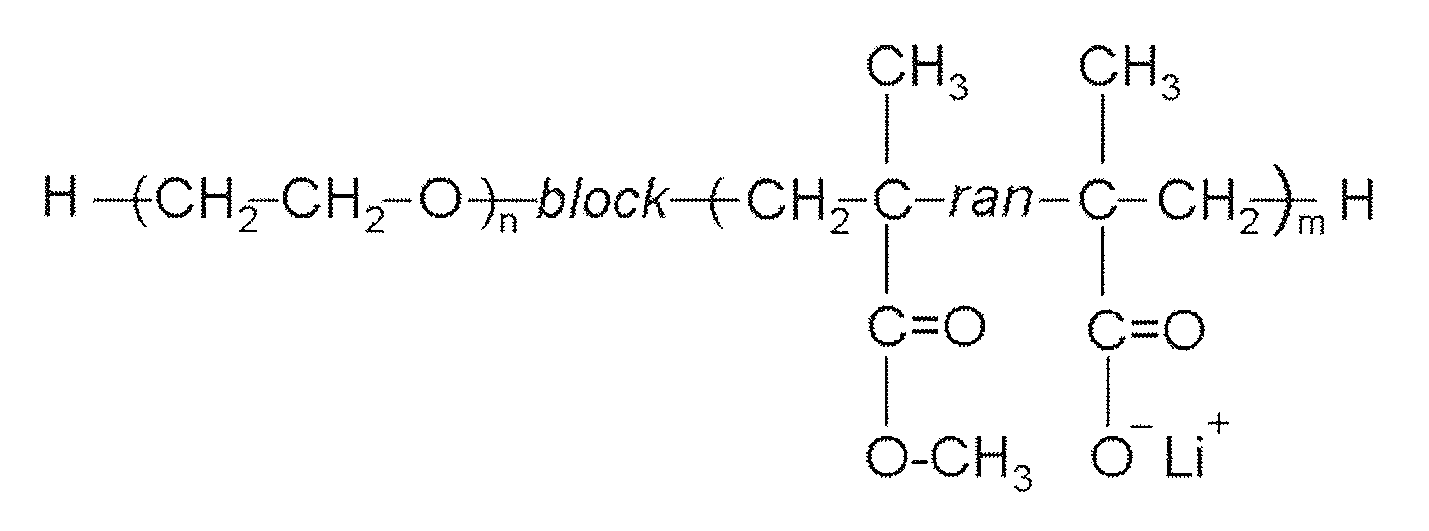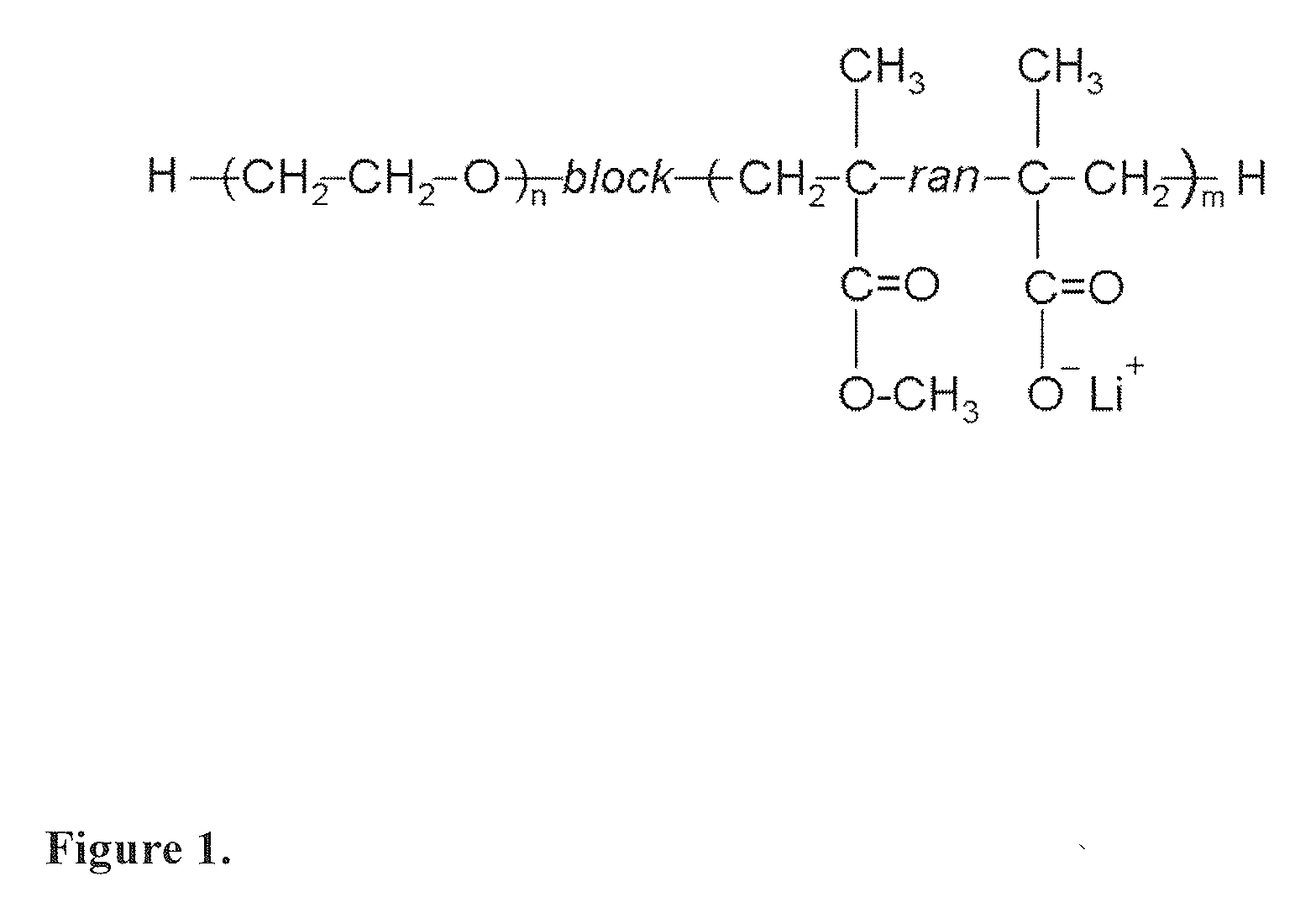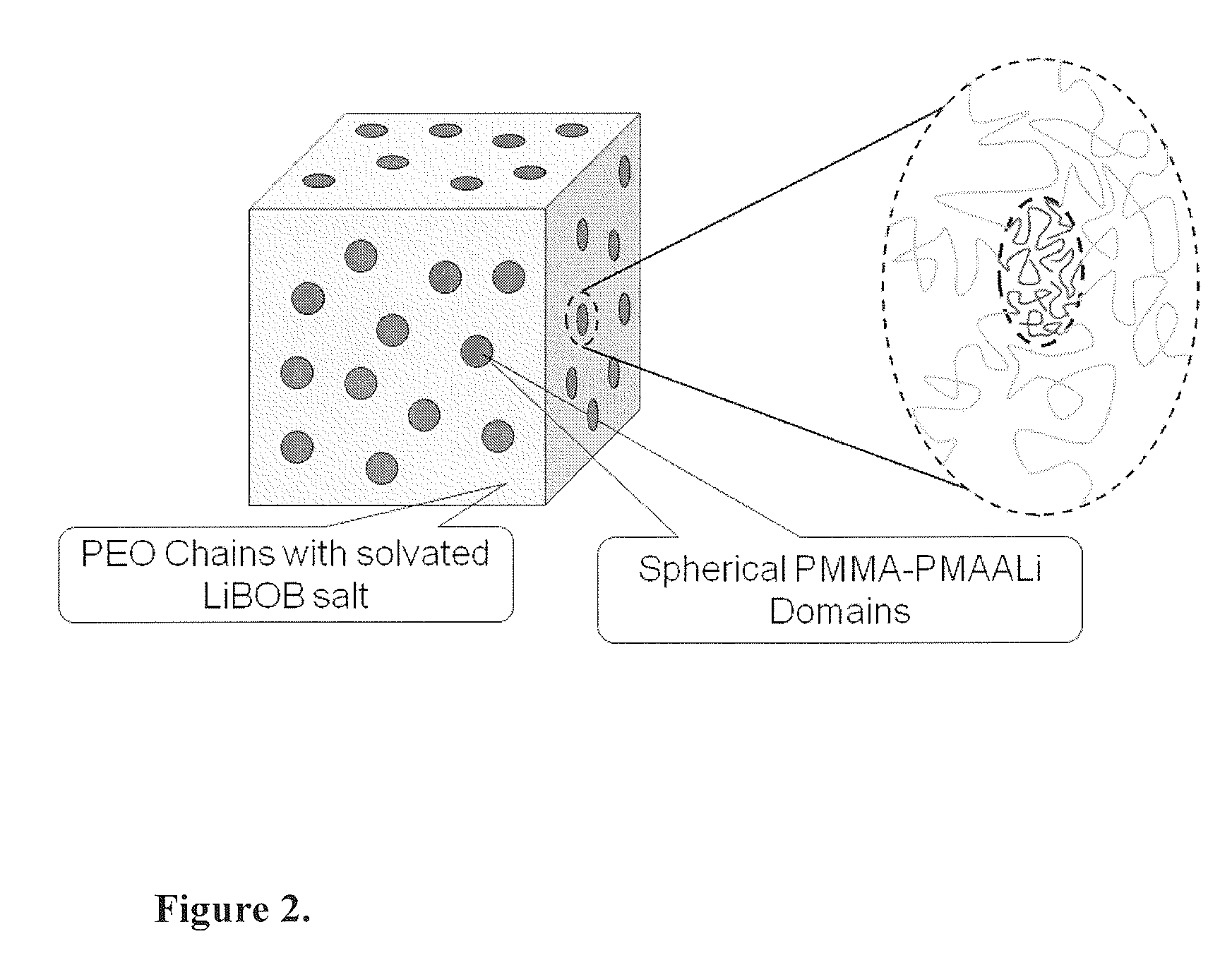Polymer Solid Electrolyte for Flexible Batteries
a flexible battery and polymer technology, applied in the field of flexible polymer solid electrolyte, can solve the problems of increasing the size and bulk of the battery, reducing the performance over time, and reducing the efficiency of the battery, so as to achieve the effect of reducing the capacity and prolonging the performance li
- Summary
- Abstract
- Description
- Claims
- Application Information
AI Technical Summary
Benefits of technology
Problems solved by technology
Method used
Image
Examples
examples
Lithiation of the Diblock Copolymer
[0068]The PEO-b-PMMA block copolymer was purchased from Polymer Source Inc. (Canada). The PEO-b-PMMA block copolymer had an average molecular weight 3000:500 of PEO to PMMA and had a polydispersity index of 1.16.
[0069]Hydrolysis was carried out using lithium hydroxide monohydrate (LiOH.H2O) as the base in a molar ratio of 2:1 between LiOH.H2O and the MMA units of the diblock copolymer. The block copolymer (PEO-b-PMMA) and LiOH.H2O were dissolved in a 2:1 solvent mixture of anhydrous 1,4-dioxane and anhydrous methanol at 85° C. for 20 hours. The hydrolysis resulted in a random copolymer of methylmethacrylate (MMA) and lithium salt of methacrylic acid (MAALi). After hydrolysis, the solvent was removed under vacuum using a Schlenk line setup with a liquid nitrogen solvent vapor trap. The dried diblock copolymer PEO-b-(PMMA-ran-PMAALi) was then stored in a Mbraun Labmaster 100 argon glove box.
[0070]It has been shown that PEO undergoes complexation with...
PUM
| Property | Measurement | Unit |
|---|---|---|
| size | aaaaa | aaaaa |
| polydispersity index | aaaaa | aaaaa |
| temperature | aaaaa | aaaaa |
Abstract
Description
Claims
Application Information
 Login to View More
Login to View More - R&D
- Intellectual Property
- Life Sciences
- Materials
- Tech Scout
- Unparalleled Data Quality
- Higher Quality Content
- 60% Fewer Hallucinations
Browse by: Latest US Patents, China's latest patents, Technical Efficacy Thesaurus, Application Domain, Technology Topic, Popular Technical Reports.
© 2025 PatSnap. All rights reserved.Legal|Privacy policy|Modern Slavery Act Transparency Statement|Sitemap|About US| Contact US: help@patsnap.com



